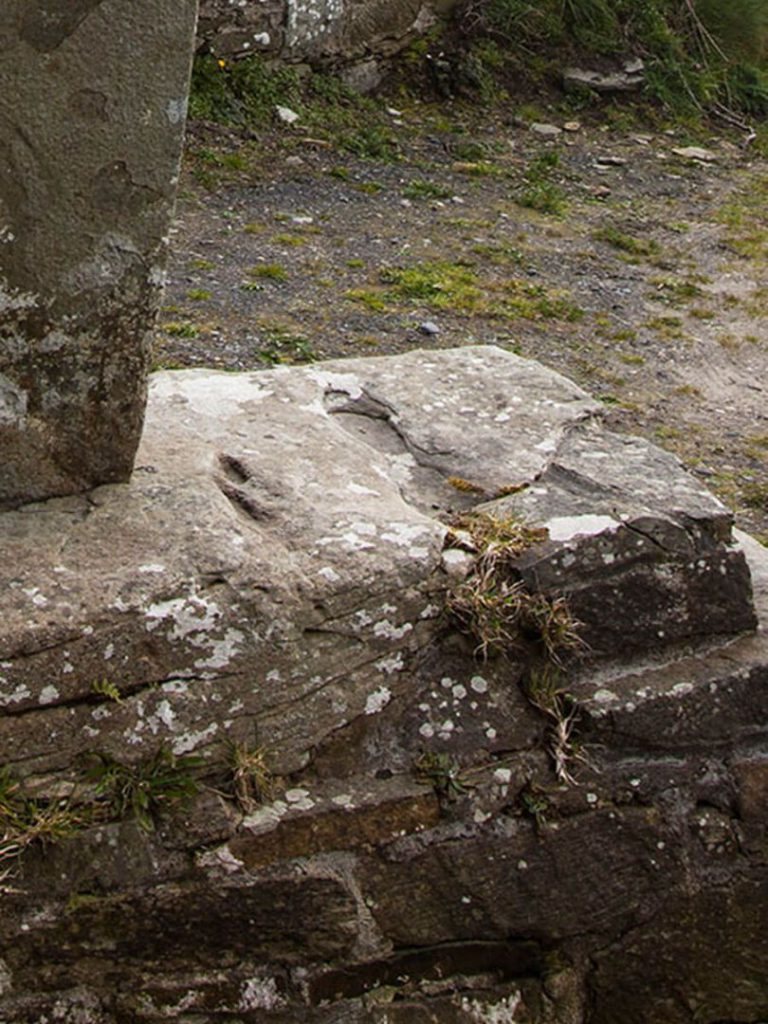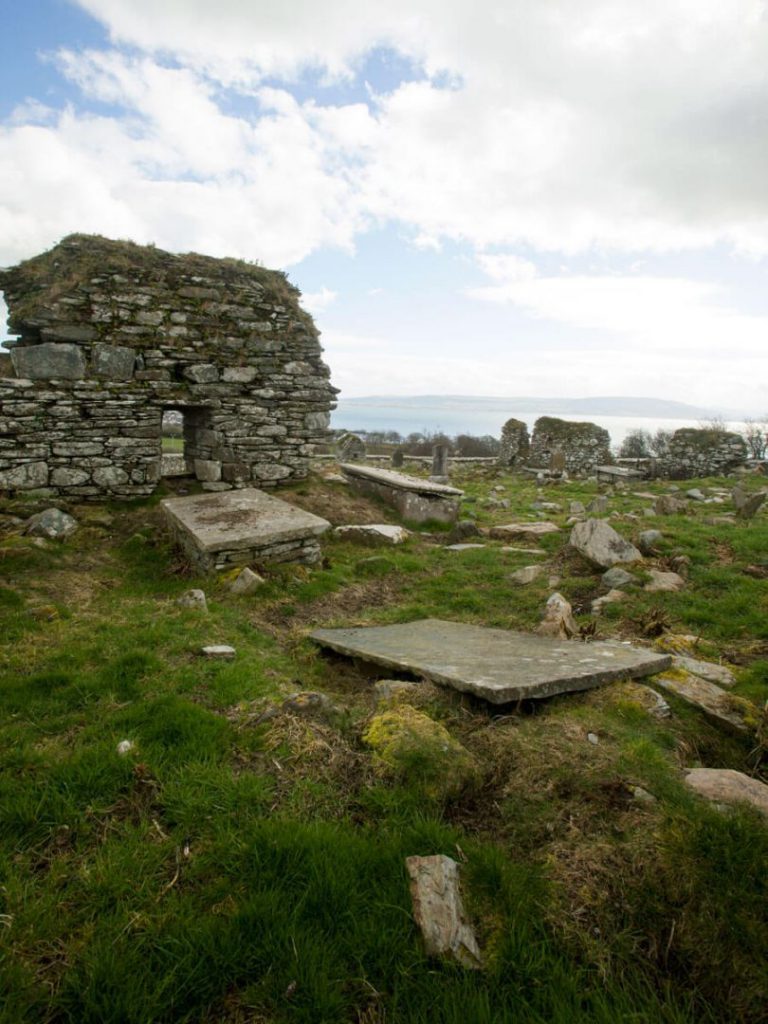MOVILLE SITE
The monastic site of Domhnach Bhile, is situated on a steep hill overlooking the town of Moville and Lough Foyle. Thought to have been founded by St Patrick before he crossed the Foyle and began his missionary work in Co Derry. “Domhnach” in the name suggests its importance to the followers of Patrick. “Bile” indicates that this was an important site of Druidic worship. One of the earliest abbots associated with the monastery is St. Finnian, who is still remembered today. There are several references to this monastery in the Annals of the Four Masters. A thriving place in the 14th century, the monastery paid a tax of forty shillings a year.
Today a graveyard covers the former monastic grounds. The remains of two churches can be seen as well as a small stone structure known as the “Skull House” with a stone roof closely modeled on the beehive huts of early monks. Until recently a large quantity of whitened bones could be seen inside.
COOLEY CROSS
The plain 3 metre High Cross, believed to be the 5th or 6th century, stands by the roadside outside the walls of the remaining graveyard.
In Ireland, as Christianity flourished after its introduction in the 5th century, pre-existing pagan shrines were rededicated to this new faith. The ancient Cooley Cross is believed to be a prime example of this.
It is suggested that it was previously a pagan “hole stone”, a primitive slab with a single hole near the top. According to a historian, Dr R.A.S. MacAlister it may have contained a peg serving as a gnomon of a rudimentary sundial, the vertical shadow indicating the hour of noon. (There is a cross with a similar hole on the greater Aran Island where the vertical shadow line is marked).
To convert to Christian use, the slab was cut down to form a cross. Four semi-circular holes were carved, creating the ring pattern distinctive in later Celtic High Crosses. Above them, but off-centre to the rest of the design is the old pagan hole still preserved. This irregular piercing is cut at a different angle to the other holes. Today the local custom remains that if you throw a pebble through the pagan hole your wish will be granted.
The base of Cooley cross is also peculiar as it is a large flat stone containing a crude representation of a human foot, traditionally ascribed to St. Patrick.





